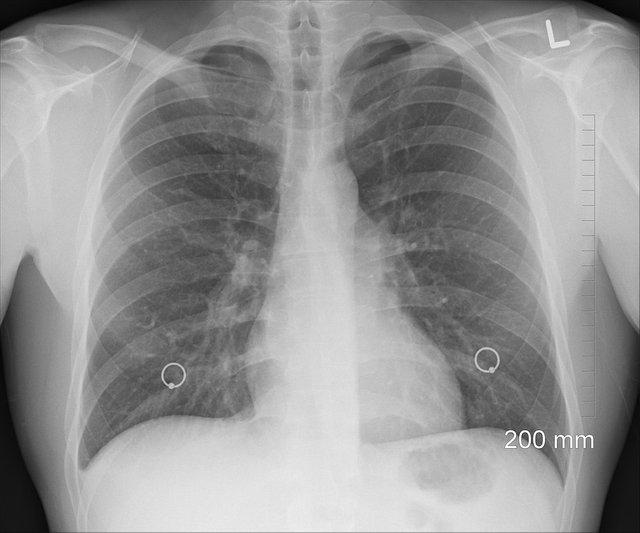Who killed Santa? How to use proteomics in forensics
I recently read a nice story by @suesa where an army of zombie Santas was temporarily unleashed on Christmas day to terrorize the humanity. You should check it out so you will better understand my post: https://steemit.com/fiction/@suesa/a-christmas-story

I like her writing style and today I will do an experiment and try to convey my point using a story.
Luckily this invasion of zombie Santas was only temporary but what would have happened if this invasion took place in a country where almost every household owns a gun? People would start shooting at these bastards of course.
Few hours after the emergency was resolved, the silence of what would have been a quiet Christmas day, was shattered by the sirens of the police. Tom was new on the job, he and his colleague in the forensic team had to deal with a dead Santa on the street. What was once a quiet and safe neighborhood is now a crime scene. A dead Santa lay on the street, probably killed in the crossfire. Bullet holes were everywhere: on the cars parked on the street, on the walls, on the doors.. two men came forth to talk to the police, they admitted that they shot at the Santa. Jesus.. how did they miss him so many times from such a short distance! It’s a miracle these two assholes did not kill or injure anyone else nearby. Now thanks to them, Tom had to collect and analyze several bullets spread all over the place. He’d rather spend the day listening to his parents-in-law rather than freezing his arse outside in this cold Christmas day.
Once back in the lab, Tom realized he had a problem. It was hard to establish who actually shot the bullet that killed Santa. There were DNA residues on the bullets but because every cell of the body has the exact same copy of the DNA, a single DNA analysis would not indicate which bullet perforated which tissue. To make things even more complicated, Tom found a bullet from a third weapon, so there was a third shooter but the police had no idea who that could be. The whole investigation was a mess, plus the police resources were spread thin to solve probably 10 similar cases in town.
“Why don’t you try with proteomics? You can get tons of info by analyzing the protein residues on those bullets. I’ve heard that for years now, a lab here in the US has been using mass spectrometry on forensic samples (link 1, link 2).” Said Kate, the lab technician.

“Proteomics? What are you talking about? I don’t have time to play around with new techniques, I’ve enough on my plate as it is. Plus, unlike DNA, proteins cannot be amplified, thus you would need a lot of sample to get any meaningful data. With DNA you could simply run a PCR (polymerase chain reaction) and amplify even traces of samples. In the worst case if I really wanted to find out which tissue those bullets perforated I can always do a transcriptome analysis and analyse the mRNA on those bullets.” said Tom.
“Ah, good luck with that, don’t you know that the DNA amplification of your samples is prone to interference? Your samples could easily get contaminated where they get in touch with different individuals or other organisms. Moreover, to perform a PCR you need to know what to look for. About the mRNA, it degrades extremely quickly once a cell dies! That’s because the RNAses, the enzymes that degrade mRNA, are ubiquitous, which means they are literally everywhere and will destroy all traces of mRNA within seconds if the samples are not well preserved. On the other hand, proteins are much more stable, and will allow you to get information even on old samples.” said kate
“Again with this proteomics stuff, from where did you get this obsession?” snapped Tom
“Well it actually started 500 years ago in central America..” Kate said
“What? Are you saying that the Incas were using proteomics to solve murder cases?” said Tom laughing
“Of course not, What I meant was that recently a group of scientists uncovered the reasons for a mysterious death of an Incan mummy that died 500 years ago (Corthals et al., 2012). A lung swab from the mummy harbored traces of Mycobacterium, a deadly pathogen.”

“Well obviously the mummy died of an infection, surely 500 years ago the Incas lived in poor sanitary conditions and were not prepared to fight disease” said Tom.
“Just shut your mouth and let me finish the story! Luckily, the team of scientists had samples from a second mummy that died in the same period, but that was not infected with Mycobacterium, so the scientists decided to use Mass Spectrometry to compare the immune system proteins from the two mummies. They also studies blood samples from the mouth of the infected mummy. The study revealed that at the time of death, the infection was not in an active stage and that the blood in the mummy’s mouth was caused by trauma, which probably was the true cause of his death (Corthals et al., 2012). Do you see now how powerful proteomics can be? Good luck solving this 500 years old mystery if you were to rely solely on DNA analysis!!” said Kate.
“All right, you have a point, anyway we don’t really have plenty of samples and I still have to run my DNA tests” said Tom
“Don’t worry, typically you perform your DNA analyses using capillary electrophoresis (CE) with spectroscopic detection, right? Talking about separation techniques, liquid chromatography and CE are complementary, but their link to mass spectrometry could enable protein analysis, thus widening the range of data you will be able to collect.” Said kate
“ok, so how do we start?”
“Well, I’ve also heard that conveniently there is a laboratory in Germany where they used bullet simulations on cow organs to collect organ-specific protein profiles (Dammeier et al., 2016), so they have already made a database that we could use! All we would have to do is to digest the proteins on the bullet’s surface and then do a peptide mapping.” Said kate
“You make it sound easy, but I guess we could face problems, especially if the bullets penetrated multiple organs”
“You are right, the results we will get won’t be 100% certain but at least they can point us to the right direction” said Kate.
So Kate convinced Tom to give it a try. They analyzed all the bullets and the results were startling. Most bullets seemed to have hit only non-vital organs and the bullet from the third weapon likely perforated a lung and it was the fatal one.
When a lung is perforated 2 events are likely to occur: if air accumulates in the pleural space between lung and the chest wall, it can hamper the expansion of the lungs causing them to collapse, this is also known as pneumothorax. If instead is blood that accumulates in the pleural cavity then it’s called known as hemothorax. It is possible also to see a combination of the 2 and it would be a pneumo-hemothorax. But let’s get back to the story.

“So it was the bullet from the third weapon.. bummer, we have no idea who was the shooter! Well, at least your proteomic analysis worked! I want to go again on the crime scene before all the evidences are gone” said Tom.
There was still a large blood stain on the asphalt, it made it easy to locate where the victim was shot. The fatal bullet was slightly flattened on one side, that might have been caused by the bouncing on a hard surface, like asphalt. If the bullet hit a lung and then bounced on the asphalt it must have been shot from above, it seems we have a sniper on our hands.
Tom walked over the blood stain and started looking around, it was a tree-lined road and there were trees on the trajectory from most windows, the only one with a clear view was the one from an old house. Tom decided to knock at the door to ask some questions.
An old lady opened the door and Tom asked if he could speak with her husband.
“Oh, I am a widow, I live on my own here” said the old lady.
“Well, maybe you had guests over for Christmas?” asked Tom
“No, I was on my way out when the crazy Santas came. They were terrorizing people and surely did not have good intentions. I live on my own, so I have to defend myself, but I got one, I guess you already found him and that’s why you are here right?” said the old lady
Tom was shocked, he would never have guessed that this sweet-looking old lady could be a deadly sniper. This has been definitely a weird day for Tom, full of surprises. First he had to deal with an army of zombie Santas, then Kate started rambling about using proteomics and now this old lady.. Nothing is what it seems!
THE END

Innocent-looking old lady - Image Source
Concluding Remarks
This was the first time I attempted at doing something like this and write a story instead of a conventional scientific post. I think it’s important to make science fun. Especially because today anyone who wants to learn about a topic can just google it and find plenty of reading materials. To write something that readers consider valuable and that is not already somewhat indexed in google it can be challenging. I will keep experimenting different writing styles until I will find what leads to the highest user-engagement. Anyway, the take-home messages from my post today are:
- Forensics often faces thorny problems but surprisingly it mainly relies only on DNA fingerprinting. Obviously, there are good reasons for it, but there is a vast repertoire of analytical techniques that are widely used in science and that would most likely make life easier for people working in forensics. Proteomics is just an example. Just for fairness I have to say that proteomics is still a time consuming process, it relies heavily on the expertise of the operator and the instruments are not readily accessible to everyone. However, demand for something will most likely fuel innovation and who knows, maybe in a few years proteomics will enter in the routine of forensic tests.
- Second take home message is that probably I should not be allowed to write fiction. I managed to turn a nice story from @suesa into a scarface-like geriatric thriller, all because of the ambition of delivering science to your screens.
References
- Corthals, A., Koller, A., Martin, D. W., Rieger, R., Chen, E. I., Bernaski, M., … Dávalos, L. M. (2012). Detecting the immune system response of a 500 year-old Inca mummy. PloS One, 7(7), e41244. https://doi.org/10.1371/journal.pone.0041244
- Dammeier, S., Nahnsen, S., Veit, J., Wehner, F., Ueffing, M., & Kohlbacher, O. (2016). Mass-Spectrometry-Based Proteomics Reveals Organ-Specific Expression Patterns To Be Used as Forensic Evidence. Journal of Proteome Research, 15(1), 182–92. https://doi.org/10.1021/acs.jproteome.5b00704
- link 1
- link 2
Well done! I liked it :)
Danke Schoen :) Your story actually inspired this post :)
If I read well between lines, Santa is an Inca mummy, isn't he? Am I right, am I right? :D
ahahah yes, apparently with a Mycobacterium infection!! :D
Great post there, keep up good work !
This replay was created using STEEMER.NET Alpha ( support STEEMER.NET Transactor / Wallet / Exchange Project here: https://steemit.com/investors-group/@cryptomonitor/steemer-net-steem-blockchain-transactor-for-windows-android-app-funding-update-243-1200-sbd-28-12-2017 )